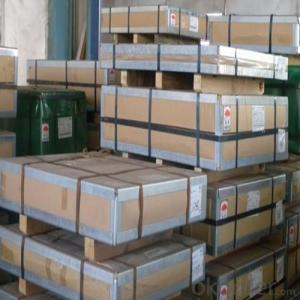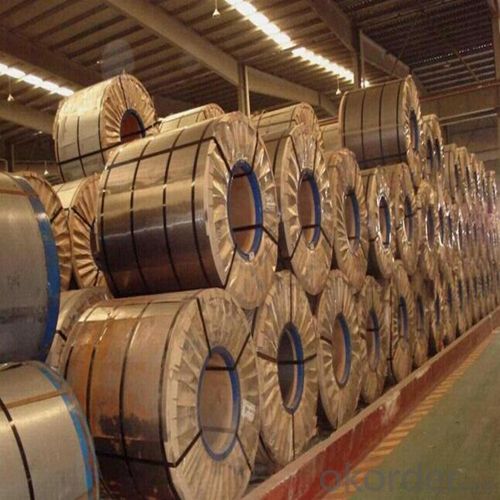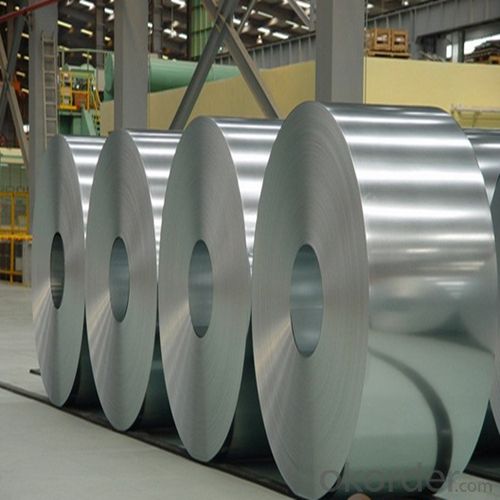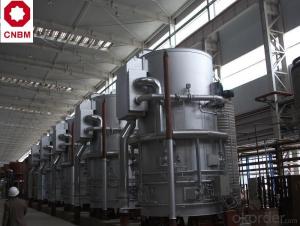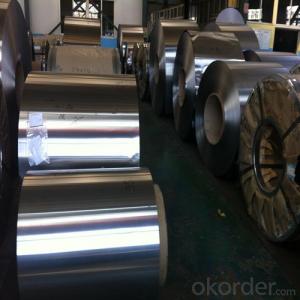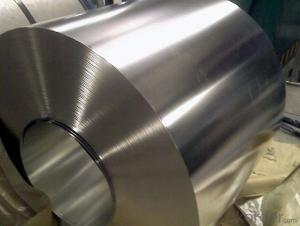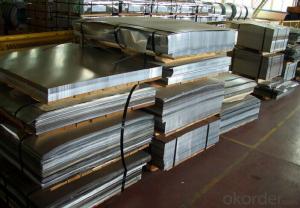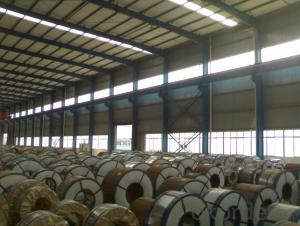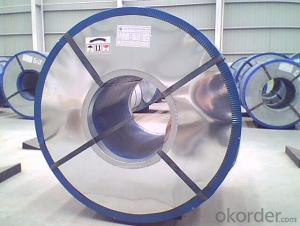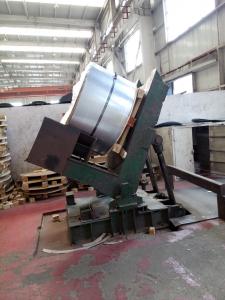Electrolytic Tinning Plate for Can Making
- Loading Port:
- Tianjin
- Payment Terms:
- TT OR LC
- Min Order Qty:
- 25 unit
- Supply Capability:
- 7000 unit/month
OKorder Service Pledge
OKorder Financial Service
You Might Also Like
1.Structure of Electrolytic Tinning Plate for Can Making Description
Electrolytic Tin Plate Coils and Sheets for Foods Metal Packaging, is one thin steel sheet with a coating of tin applied by electrolytic deposition. Tinplate made by this process is essentially a sandwich in which the central core is strip steel. This core is cleaned in a pickling solution and then fed through tanks containing electrolyte, where tin is deposited on both sides. As the strip passes between high-frequency electric induction coils, it is heated so that the tin coating melts and flows to form a lustrous coat.
2.Main Features of the Electrolytic Tinning Plate for Can Making
Appearance – Electrolytic Tin Plate is characterized by its beautiful metallic luster. Products with various kinds of surface roughness are produced by selecting the surface finish of the substrate steel sheet.
Paintability and printability – Electrolytic Tin Plates have excellent paintability and printability. Printing is beautifully finished using various lacquers and inks.
Formability and strength – Electrolytic Tin Plates have got very good formability and strength. By selecting a proper temper grade, appropriate formability is obtained for different applications as well as the required strength after forming.
Corrosion resistance – Tinplate has got good corrosion resistance. By selecting a proper coating weight, appropriate corrosion resistance is obtained against container contents. Coated items should meet 24 hour 5 % salt spray requirement.
Solderability and weldability – Electrolytic Tin Plates can be joined both by soldering or welding. These properties of tinplate are used for making various types of cans.
Hygienic – Tin coating provides good and non toxic barrier properties to protect food products from impurities, bacteria, moisture, light and odours.
Safe – Tinplate being low weight and high strength makes food cans easy to ship and transport.
Eco friendly – Tinplate offers 100 % recyclability.
Tin is not good for low temperature applications since it changes structure and loses adhesion when exposed to temperatures below – 40 deg C.
3.Electrolytic Tinning Plate for Can Making Images
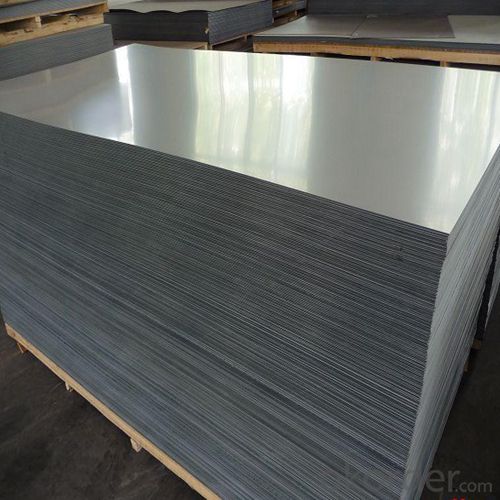
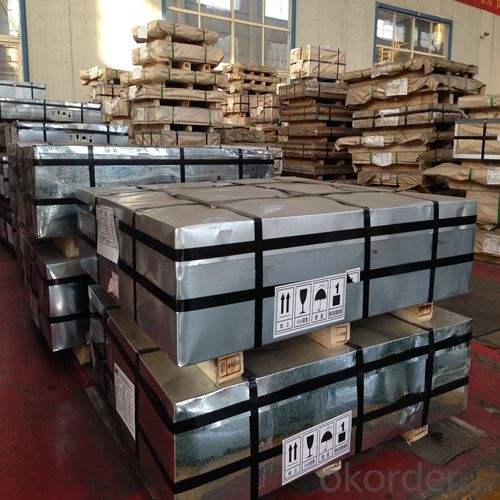
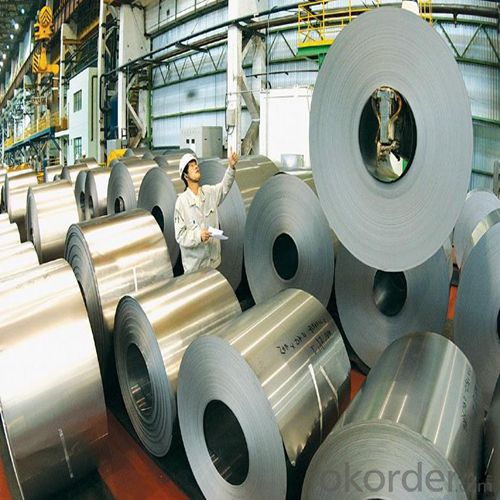
4.Electrolytic Tinning Plate for Can Making Specification
Standard | ISO 11949 -1995, GB/T2520-2000,JIS G3303,ASTM A623, BS EN 10202
|
Material | MR,SPCC |
Thickness | 0.15mm - 0.50mm |
Width | 600mm -1150mm |
Temper | T1-T5 |
Annealing | BA & CA |
Coil Inner Diameter | 508mm |
Weight | 6-10 tons/coil 1~1.7 tons/sheets bundle |
Passivation | 311 |
Oil | DOS |
Surface | Finish,bright,stone,matte,silver |
5.FAQ of Electrolytic Tinning Plate for Can Making
- How are the Electrolytic Tin Plates specified?
The Electrolytic Tin Plates are specified as per the steel base, extent of tempering, the coating weight, annealing method and the surface finish.
- How many types there are for base steels?
The base steels are of three types: Type MR, L, D
-What your tinplate material is used for ?
Tinplate is widely used for the packaging of products. Such as food cans,
beverage cans, pet cans, closures, general line cans and so on.
- Q: What are the advantages of using tinplate for jewelry?
- One advantage of using tinplate for jewelry is its affordability. Tinplate is a cost-effective material compared to precious metals such as gold or silver, making it accessible to a wider range of consumers. Additionally, tinplate is lightweight, making it comfortable to wear for extended periods. It also offers versatility in design, allowing for intricate and detailed jewelry pieces. Lastly, tinplate is highly resistant to corrosion, ensuring the longevity and durability of the jewelry.
- Q: What are the key properties of tinplate?
- The key properties of tinplate include its corrosion resistance, durability, malleability, and ability to be easily formed and shaped. Additionally, tinplate has excellent heat resistance, making it suitable for various applications in the packaging industry.
- Q: How does tinplate perform in terms of chemical resistance?
- Tinplate performs well in terms of chemical resistance due to its tin coating, which acts as a barrier against corrosion and chemical reactions. This coating provides excellent protection against acidic substances and prevents the metal from being affected by certain chemicals, making tinplate a reliable choice for packaging materials in various industries.
- Q: What are the common printing techniques for tinplate?
- The common printing techniques for tinplate include lithography, offset printing, and silk-screen printing.
- Q: What are the quality control measures for tinplate production?
- Quality control measures for tinplate production typically include various inspections and tests at different stages of the manufacturing process. Some common quality control measures include: 1. Raw material inspection: The quality of the steel used for tinplate production is assessed, including its chemical composition, thickness, and surface finish. Any deviations from the desired specifications are flagged. 2. Coating inspection: The tin coating applied to the steel is examined for uniformity, adhesion, thickness, and absence of defects like pinholes or scratches. This ensures the protective and aesthetic qualities of the tinplate. 3. Surface inspection: The surface of the tinplate is inspected for any visible defects such as dents, scratches, or irregularities. This ensures the overall quality and appearance of the final product. 4. Dimensional control: Tinplate sheets or coils are measured to ensure they meet the specified dimensions and tolerances. This includes verifying the length, width, thickness, and flatness of the tinplate. 5. Tinplate performance testing: Selected samples are subjected to various mechanical and chemical tests to assess their performance. These tests can include assessments of corrosion resistance, adhesion, hardness, and tin coating integrity. 6. Packaging inspection: The final tinplate products are inspected for proper packaging, labeling, and protection. This ensures that the tinplate reaches customers in good condition and meets their expectations. By implementing these quality control measures, manufacturers can maintain consistent product quality, meet customer requirements, and ensure the reliability and functionality of tinplate products.
- Q: How does tinplate handle exposure to extreme temperatures?
- Tinplate is known for its excellent resistance to extreme temperatures. It can handle exposure to both high and low temperatures without any significant impact on its structural integrity or performance.
- Q: What are the factors that determine the lifespan of tinplate packaging?
- The factors that determine the lifespan of tinplate packaging include the quality of the tin coating, the thickness of the tinplate, the presence of protective coatings or lacquers, the environmental conditions in which the packaging is stored or used, and the handling or storage practices.
- Q: How does tinplate packaging contribute to reducing food waste?
- Tinplate packaging helps reduce food waste by providing a secure and durable barrier that protects food from external elements, such as air, light, and moisture. This helps to extend the shelf life of food products, preventing spoilage and contamination. Additionally, tinplate packaging is highly recyclable, allowing for the efficient recovery and reuse of materials, reducing the environmental impact and promoting sustainability.
- Q: What are the advantages of using tinplate for stationery and office supplies?
- One of the advantages of using tinplate for stationery and office supplies is its durability. Tinplate is known for its resistance to corrosion, making it long-lasting and suitable for items that are frequently used or handled. Additionally, tinplate provides a smooth and glossy surface, enhancing the aesthetic appeal of stationery and office supplies. Its malleability allows for intricate designs, making it suitable for customizations and branding. Lastly, tinplate is a sustainable option as it is recyclable, contributing to eco-friendly practices in the stationery and office supply industry.
- Q: Can tinplate be used for microwave-safe packaging?
- No, tinplate cannot be used for microwave-safe packaging as it is made of steel coated with a thin layer of tin, which can cause sparks and potential damage to the microwave.
Send your message to us
Electrolytic Tinning Plate for Can Making
- Loading Port:
- Tianjin
- Payment Terms:
- TT OR LC
- Min Order Qty:
- 25 unit
- Supply Capability:
- 7000 unit/month
OKorder Service Pledge
OKorder Financial Service
Similar products
Hot products
Hot Searches
Related keywords
